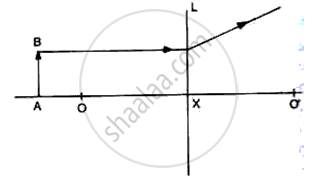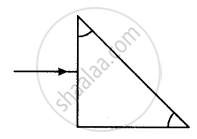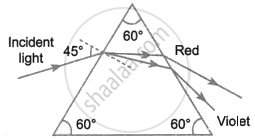Advertisements
Advertisements
प्रश्न
State the speed of light in (a) air, (b) water, and (c) glass
उत्तर
Speed of light in
Air - 3 × 108 ms-1 or 300000 km/h
Water - 2.25 × 108 ms-1
Glass - 2 × 108 ms-1
APPEARS IN
संबंधित प्रश्न
When a beam of white light is passed through a prism, it splits to form lights of seven colours. Is it possible to recombine the lights of seven colours to obtain the white light again? Explain your answer.
Draw a diagram to show the refraction of light through a glass prism. On this diagram, mark
(i) incident ray
(ii) emergent ray, and
(iii) angle of deviation.
What is a rainbow? What are the two conditions necessary for the formation of a rainbow in the sky?
Out of the following, the colour of light having the maximum wavelength is:
(a) violet
(b) indigo
(c) green
(d) orange
A ray of white light falls on a prism. Draw a ray diagram to show that the prism disperses the white light.
Refer to fig
(i) Name the lens L.
(ii) What are the points O, O' called?
(iii) Complete the diagram to form the image of the object AB.
(iv) Write three characteristics of the image.

If white light is used in same way what change is expected in the emergent beam?
In the diagram, a narrow beam of white light is incident on a right-angled isosceles prism. The critical angle of the material of prism for the yellow colour of white light is 45°. Complete the diagram to show the path of blue, yellow, and red colours of white light till they emerge out of the prism.

The splitting of white light into its component colours is called ____________.
A ray of light is incident at 45° on an equilateral prism in the diagram below.

- Name the phenomenon exhibited by the ray of light when it enters and emerges out of the prism.
- State the cause of the above phenomenon mentioned by you.
